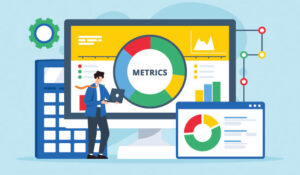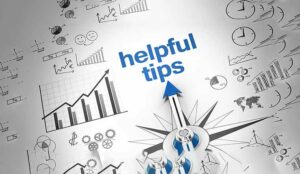Quoting Peter Drucker, “You can’t improve what you don’t measure”. If you’re a Customer Service Manager looking to boost your contact centre’s performance, paying attention to key performance indicators (KPIs) and understanding contact centre metrics is pretty important.
These metrics are like trustworthy guides that change as time goes on. They’re here to help you find answers to big questions like:
- Are my customers happy?
- Am I giving better help and service than my competitors?
- Do I have the right people and tech in the right places?
In this blog post, we’re diving into the basics of contact centre metrics and KPIs that can help you figure out how to measure and make your contact centre perform even better.
Key Contact Centre Metrics to Track and Analyze
Keeping tabs on important metrics is essential, but with a sea of options, how do you decide which ones to focus on? The contact centre metrics that hold the utmost importance can vary greatly.
For instance, metrics important to an IT support contact centre will differ significantly from those crucial for a retail customer complaints centre. Moreover, even within the same organization, the significance of a particular metric can shift depending on one’s role.
Various job roles call for distinct sets of metrics—customer service leaders might prioritize one, while frontline managers opt for another. Executives seek metrics that provide a holistic view, reinforcing the value of stellar customer service.
Operational managers lean towards intricate metrics to excel in customer support and adeptly manage teams. Sadly, there’s no universal metric list or decision tree to follow.
However, there are some universally beneficial metrics that certainly deserve attention. They’re the go-to tools for answering your most crucial business queries. Let’s explore key contact centre metrics to track and analyze.
Key Contact Centre Metrics
1. Average Call Abandonment Rate
This metric shows you the percentage of callers who hung up before reaching an agent.
Average Call Abandonment Rate = (Abandoned calls/total incoming calls) *100
2. Percentage of Calls Blocked
This metric indicates the number of incoming calls that receive a busy signal due to insufficient contact centre resources.
Percentage of Calls Blocked = (Blocked calls/ Total incoming calls)*100
3. Average Time in Queue
This metric evaluates the average duration callers spend waiting in the queue before being connected to an agent.
Average Time in Queue = Total time each caller spends in queue/ The total number of callers
4. Service Level
This metric determines the percentage of calls answered within a specified time frame.
Service Level = (Calls answered within the threshold/ Total incoming calls)*100
5. Average Speed of Answer
This metric measures the average time it takes for calls to be answered by an agent.
Average Speed of Answer = Total time each call takes to be answered/ The total number of calls answered
6. Average Handle Time
This metric gauges the average time an agent spends on a call, including talk time and after-call work.
Average Handle Time = Total talk time and after-call work time/ The number of calls
7. Average After-Call Work Time
This metric evaluates the average time agents spend on doing the work associated with a call after the call ends.
Average After-Call Work Time = Total after-call work time for all calls/ The number of calls
8. First Call Resolutions
This metric measures the percentage of calls that are successfully resolved in the very first interaction between your agent and the customer, ensuring high customer satisfaction levels.
First Call Resolutions = (The number of resolved calls on the first contact/ Total calls) *100
9. Occupancy Rates
This metric assesses the percentage of time agents spend on productive tasks versus idle time.
Occupancy Rates = (Productive time/ total logged-in time)*100
Most Common Contact Centre Metrics
While every contact centre has its unique approach to measuring performance, there are industry-wide standards for metrics and KPIs that prevail.
Typically, these metrics cluster around specific areas of interest, unveiling pivotal insights into the customer experience while balancing both quality and quantity.
In the following sections, we’ll delve into metrics spanning these five crucial domains.
- Response Time Metrics
- Efficiency Metrics
- Quality Metrics
- Agent Performance Metrics
- Technology Metrics
Response Time Metrics
These metrics focus on how quickly calls are answered and attended to.
- Average Speed of Answer: A low average speed of answer indicates efficient call routing and adequate agent availability, reducing customer frustration.
- Average Time in Queue: Managing average time in queue is crucial for minimizing customer wait times, enhancing satisfaction, and optimizing agent utilization.
- Service Level: Achieving a high service level demonstrates responsiveness and the contact centre’s commitment to meeting customer needs promptly.
- Percentage of Calls Blocked: A high percentage of calls blocked suggests inadequate capacity planning, leading to missed customer interactions.
- First Response Time: A quick first response time portrays proactive customer service and can significantly impact the customer experience.
- Active Waiting Calls: Monitoring active waiting calls helps prevent overburdening agents and maintains manageable queue lengths.
- Abandoned Call Rate: A high abandonment rate can result from extended wait times or poor call routing, leading to dissatisfied customers.
Efficiency Metrics
Efficiency metrics gauge the overall productivity of the contact centre.
- Average Handle Time: Balancing a reasonable average handle time ensures efficient interactions without compromising service quality.
- Average After-Call Work Time: Efficient after-call work reduces idle time between calls and boosts agent availability.
- Agent Utilization Rate: Maintaining a high agent utilization rate optimizes resources while avoiding agent burnout due to constant engagement.
- Calls Handled: Tracking calls handled provides insights into agent workload and efficiency, aiding workforce management decisions.
- Call Arrival Rate: Managing call arrival rates is vital for matching agent availability to call volume, preventing both under and over-staffing.
- Peak Hour Traffic: Identifying peak hours enables strategic staffing adjustments to handle increased call volumes effectively.
- Cost per Call (CPC): Evaluating cost per call helps determine the economic efficiency of each customer interaction, guiding budgeting decisions.
Quality Metrics
Quality metrics delve into the effectiveness of customer interactions.
- First Contact Resolutions: A higher first contact resolution rate indicates effective issue resolution, reducing customer effort and enhancing satisfaction.
- Net Promoter Score (NPS): NPS reveals customer loyalty and their potential to be brand promoters, valuable for long-term business growth.
- Customer Satisfaction Score (CSAT): CSAT measures immediate customer contentment, giving insights into service quality.
- Customer Effort Score (CES): A lower CES score reflects smoother issue resolution processes, contributing to positive customer experiences.
- Average Age of Query: Tracking average query age helps identify long-pending issues and supports prioritization for timely resolution.
- Average Call Lengths: Analyzing average call lengths assists in understanding interaction complexities, agent performance, and process efficiency.
Agent Performance Metrics
These metrics focus on individual agent performance.
- Repeat Calls Rate: A high repeat call rate may indicate unresolved issues or ineffective initial resolutions, requiring process improvements.
- Agent Absenteeism: Monitoring absenteeism aids in planning for adequate staffing levels, ensuring consistent service delivery.
- Agent Turnover Rate: High contact centre agent turnover can lead to disruptions in service, increased training costs, and lowered morale.
- Agent Satisfaction: Improving agent satisfaction fosters engagement, which translates into better customer interactions and reduced turnover.
- Agent Productivity: Maximizing agent productivity through effective training and support contributes to optimized contact centre operations.
Technology Metrics
Technology metrics assess the effectiveness of contact centre tools.
- Self-Service Utilization: Higher self-service utilization indicates successful adoption of automated solutions, reducing contact centre agent workload and enhancing customer convenience.
- Average Hold Time: Managing average hold time helps minimize customer frustration, enhancing overall customer satisfaction.
- Average Talk Time: Analyzing average talk time aids in optimizing agent-customer interactions balancing efficiency and quality.
- Call Abandonment Rate: A lower call abandonment rate indicates better accessibility and customer experience, boosting overall service quality.
- Callback Messaging: Monitoring callback messaging metrics helps track customer preferences for alternative communication channels, enhancing engagement.
Response Time Metrics
- Average Speed of Answer
- Average Time in Queue
- Service Level
- Percentage of Calls Blocked
- First Response Time
- Active Waiting Calls
- Abandoned Call Rate
Efficiency Metrics
- Average Handle Time
- Average After-Call Work Time
- Agent Utilization Rate
- Calls Handled
- Call Arrival Rate
- Peak Hour Traffic
- Cost per Call (CPC)
Quality Metrics
- First Contact Resolutions
- Net Promoter Score (NPS)
- Customer Satisfaction Score (CSAT)
- Customer Effort Score (CES)
- Average Age of Query
- Average Call Lengths
Agent Performance Metrics
- Repeat Calls Rate
- Agent Absenteeism
- Agent Turnover Rate
- Agent Satisfaction
- Agent Productivity
Technology Metrics
- Self-Service Utilization
- Average Hold Time
- Average Talk Time
- Call Abandonment Rate
- Callback Messaging
Contact Centre Metrics: Best Practices for Success
Ensuring success in your contact centre goes beyond just monitoring the appropriate metrics; it’s equally crucial to monitor them correctly. In this section, we will explore contact centre metrics best practices.
Setting Clear Performance Goals
Even with a wealth of data, it could all go to waste if you’re unsure about your motive. Before delving into data measurement, take a moment to clarify your goals.
What do you aim to achieve? What’s the endgame? Are you striving to minimize customer wait times?
This clarity guides your metrics selection, ensuring you focus on the right contact centre KPIs for your desired outcome.
Implementing an Efficient Call Centre Tracking Software
Avoid the pitfalls of manual tracking, which can lead to errors and unnecessary expenses over time. Instead, invest in dependable contact centre tracking software.
This software streamlines data collection, analysis, and management, all while offering real-time monitoring of critical metrics. It simplifies performance reporting and sheds light on agent and team achievements.
Analyzing Qualitative and Quantitative Metrics
A well-rounded approach to understanding contact centre metrics involves considering quantitative and qualitative measures.
While quantitative metrics like average handling time, first call resolution, and abandonment rate offer numerical insights, qualitative metrics such as customer satisfaction scores, sentiment analysis, and customer feedback provide a more holistic understanding of customer interactions.
Balancing both metrics helps make informed decisions and address various aspects of contact centre performance.
Continuous Agent Training and Coaching
Regular training and coaching sessions are crucial for agent development and performance improvement. Providing ongoing training on communication skills, product knowledge, and problem-solving techniques equips agents to handle diverse customer inquiries more effectively.
Based on performance metrics, coaching sessions enable supervisors to provide constructive feedback and personalized guidance to individual agents, fostering skill enhancement and boosting morale.
Addressing Common Mistakes in Measuring Call Centre Metrics
Avoid common errors: Don’t overly prioritize efficiency metrics or overlook contextual interpretation. A higher average handling time means thorough issue resolution rather than inefficiency.
Ignoring employee feedback about customer interactions is a missed opportunity. Using metrics in isolation yields incomplete insights.
Metrics should evolve with business needs and customer preferences. Regularly reevaluate and update tracked metrics for alignment with changing demands.
This blog post has been re-published by kind permission of Five9 – View the Original Article
For more information about Five9 - visit the Five9 Website
Call Centre Helper is not responsible for the content of these guest blog posts. The opinions expressed in this article are those of the author, and do not necessarily reflect those of Call Centre Helper.
Author: Five9
Published On: 2nd Oct 2023 - Last modified: 9th Dec 2024
Read more about - Guest Blogs, Five9






 Five9 empowers organizations to create hyper-personalized and effortless AI-driven customer experiences that deliver better business outcomes. Powered by Five9 Genius AI and our people, the Five9 Intelligent CX Platform is trusted by 3,000+ customers and 1,400+ partners globally. The New CX starts here and it's at the heart of every winning experience.
Five9 empowers organizations to create hyper-personalized and effortless AI-driven customer experiences that deliver better business outcomes. Powered by Five9 Genius AI and our people, the Five9 Intelligent CX Platform is trusted by 3,000+ customers and 1,400+ partners globally. The New CX starts here and it's at the heart of every winning experience. 































